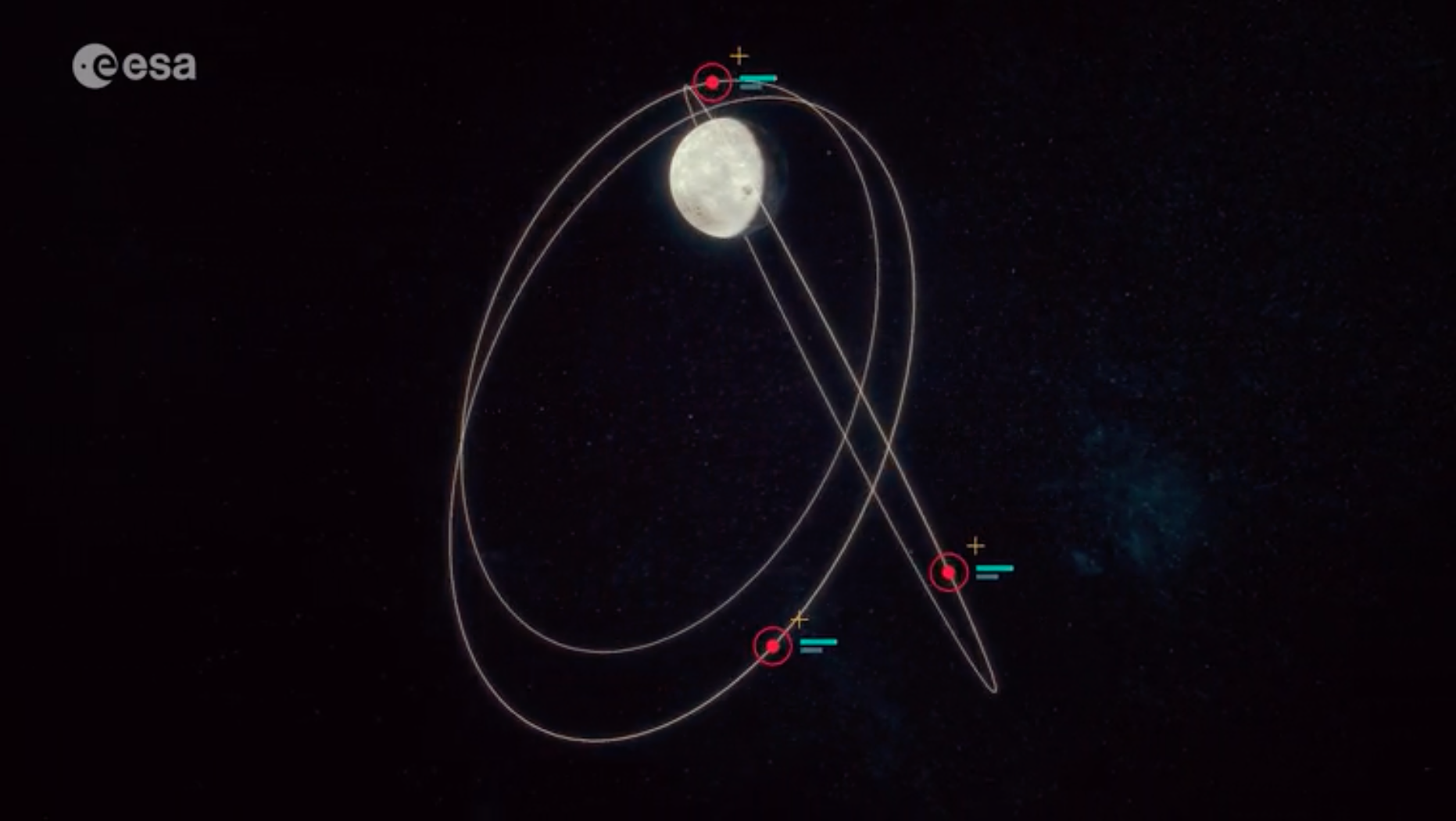As the race back to the Moon heats up — with plans for long-term human habitation — reliable communication is a fundamental issue. With dozens of plans for experiments of various sizes and scopes needing to communicate with each other and Earth, the European Space Agency has opened a call for help in building the required suite of telecommunication services. Called “Moonlight,” the system will include a standardised Moon clock.
Today, ESA opened up applications for private companies to help with the Moonlight program. The program will see the launch of three or four satellites to the Moon, to be deployed in its orbit to provide constant telecommunication and navigation coverage to the lunar surface and back to Earth. The orbits of the satellite constellation will be optimised to cover the lunar south pole, which was selected as the site where Artemis mission astronauts will eventually land.
“This will allow missions to maintain links to and from Earth, and guide them on their way around the moon and on the surface, allowing them to focus on their core tasks,” said Wael-El Daly, system engineer for Moonlight, in an ESA post. “But also, Moonlight will need a shared common timescale in order to get missions linked up and to facilitate position fixes.”

Moonlight needs a common lunar reference time in order to provide accurate location data to users on the Moon’s surface. In order to keep time on different lunar missions in the past, each mission synchronised its clocks with those on Earth and used antennas in space to correct from drifts in time. ESA says this solution will prove inadequate as space agencies plan to send more humans and autonomous rovers than ever to the Moon. These different teams may need to communicate with each other, rendezvous, or conduct joint observations, and a standardised clock could smooth out issues in that regard.
ESA said in a post that discussions around timekeeping on the Moon began during a meeting at ESA’s European Space Research and Technology Centre in the Netherlands last November. But talks of a standardised Moon time came as part of a larger effort to agree upon and establish NASA’s LunaNet, a network of digital architecture that could be used for communication and navigation on the Moon.
“LunaNet is a framework of mutually agreed-upon standards, protocols and interface requirements allowing future lunar missions to work together, conceptually similar to what we did on Earth for joint use of GPS and Galileo,” said Javier Ventura-Traveset, ESA’s Moonlight Navigation Manager. “Now, in the lunar context, we have the opportunity to agree on our interoperability approach from the very beginning, before the systems are actually implemented.”
There is no set launch date for the Moonlight satellites, but ESA is planning on using the Lunar Pathfinder as a precursor to the Moonlight initiative. Pathfinder, due for launch in 2025, and (eventually) Moonlight will help connect astronauts on the lunar surface, such as those that are a part of NASA’s return to the Moon.
More: Remembering Saturn V, the Rocket That Took Us to the Moon
Editor’s Note: Release dates within this article are based in the U.S., but will be updated with local Australian dates as soon as we know more.
